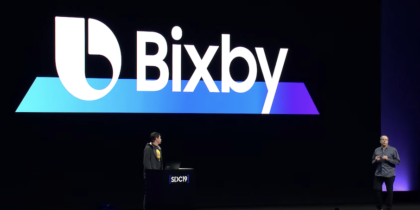Today’s CMOs have a difficult job. Not only do companies rely on CMOs to deliver their company’s message to their customers and drive growth, but CMOs are also expected to be a master of multiple disciplines. As 2017 kicks off, the pressure on CMOs to deliver a winning marketing strategy is only increasing.
The average tenure of a CMO is just 44 months, which is hardly surprising given that Forrester reports that 30 percent of CEOs indicated they would fire these C-level professionals in 2017, according to Destination CRM. According to Accenture, 37 percent of CEOs say their CMOs are “first on the firing line if growth targets are not met.”
However, the importance of the CMO should not be underestimated. According to a study by CMO.com, firms that have a better marketing capability have nearly two-thirds higher market share than firms that are weak in marketing capability. In 2017, CMOs also need to rethink the way they work and seek to combine the best of science with the creative arts to deliver a compelling and engaging marketing strategy that will attract and retain customers.
Post Digital
Some CMOs are singularly focused on the data, while others are entirely focused on the creative arts. The reality is that a combination of these two skills needs to be embraced by any successful CMO. “Neither the high-energy creative CMO nor the data wonk will be enough to carry marketing functions and business strategy into the age of the customer,” the Forrester report states.
The reason there is increased focus on the CMO’s role is that we are living in a “post-digital world,” where customers no longer see a boundary between their physical and digital experiences — and that failing to understand this concept could be fatal to any CMO’s marketing strategy.
Mobile security is crucial.
Download the white paper to learn why Samsung devices are some of the most secure available. Download Now
In 2017, there are a lot of uncertainties in the world, and it’s therefore imperative for any brand to reassure customers that they can be trusted and deliver on the promises they make. The problem for some CMOs is that they fail to see this new reality and continue to bombard customers with messages and promotions, leading to too much contact, leaving the customer overwhelmed rather than engaged.
Let’s look at the two components a CMO needs to combine in order to effectively deliver their strategy:
The Science
Finding and implementing the right technology solutions can be difficult, given the exponential rise in solutions on the market and the time needed to keep on top of new developments — and using the technology you buy effectively.
However, this is just the beginning. What CMOs really need to do is use the data that is available and leverage it to deliver a compelling message to their customers. CMOs typically don’t utilize the huge amounts of data available, with one report from the Data & Marketing Association showing that 70 percent of companies still don’t collect data on their customers from social media channels.
But collecting the data is not enough. Because the amount of information available is now so vast, analyzing it manually is impossible, so CMOs need to make use of artificial intelligence to recognize the trends buried within the data. Machine learning, a branch of artificial intelligence that gives computers the ability to teach themselves, without the need for human intervention, is a vital tool for recognizing consumer trends.
For companies seeking to gain an advantage, being able to quickly identify patterns in the data collected from their customers can be a major boon. For example, identifying customers’ attitudes toward a certain marketing push by analyzing their social media outputs can give CMOs instant feedback.
The Art
Knowing what your customers are doing, how your products are being received and how your messages are being interpreted is great, but without the creative flair to act on that new information, it is wasted.
The most successful campaigns don’t simply broadcast a message, rather they engage the customer on an emotional level, seeking to speak directly to the person instead of blasting our a generic slogan. The key is to make the emotional engagement sufficient that the person hearing the message buys your product — or better yet tells their friends all about it.
One recent example of this is the Mercedes-Benz holiday campaign called Snow Date, which was highly relatable thanks to powerful storytelling. By creating a narrative that is recognizable for customers and can create one-on-one moments, campaigns will have a much longer lasting impact.
Thinking in one dimension is no longer enough for a modern CMO. In a post digital world, CMOs need to combine the best of art and science if they are to deliver effective, targeted and compelling messages for their brands, and more importantly, for their customers.
Investing in cutting-edge technology can help improve your 2017 marketing initiatives.








